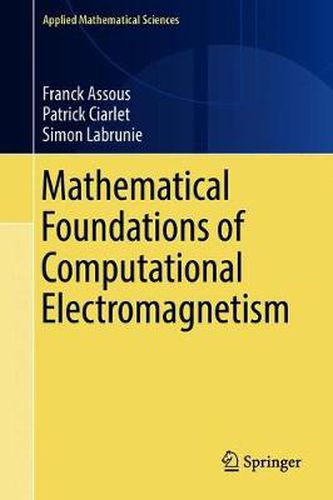Readings Newsletter
Become a Readings Member to make your shopping experience even easier.
Sign in or sign up for free!
You’re not far away from qualifying for FREE standard shipping within Australia
You’ve qualified for FREE standard shipping within Australia
The cart is loading…






This title is printed to order. This book may have been self-published. If so, we cannot guarantee the quality of the content. In the main most books will have gone through the editing process however some may not. We therefore suggest that you be aware of this before ordering this book. If in doubt check either the author or publisher’s details as we are unable to accept any returns unless they are faulty. Please contact us if you have any questions.
This book presents an in-depth treatment of various mathematical aspects of electromagnetism and Maxwell’s equations: from modeling issues to well-posedness results and the coupled models of plasma physics (Vlasov-Maxwell and Vlasov-Poisson systems) and magnetohydrodynamics (MHD). These equations and boundary conditions are discussed, including a brief review of absorbing boundary conditions. The focus then moves to well-posedness results. The relevant function spaces are introduced, with an emphasis on boundary and topological conditions. General variational frameworks are defined for static and quasi-static problems, time-harmonic problems (including fixed frequency or Helmholtz-like problems and unknown frequency or eigenvalue problems), and time-dependent problems, with or without constraints. They are then applied to prove the well-posedness of Maxwell’s equations and their simplified models, in the various settings described above. The book is completed with a discussion of dimensionally reduced models in prismatic and axisymmetric geometries, and a survey of existence and uniqueness results for the Vlasov-Poisson, Vlasov-Maxwell and MHD equations.
The book addresses mainly researchers in applied mathematics who work on Maxwell’s equations. However, it can be used for master or doctorate-level courses on mathematical electromagnetism as it requires only a bachelor-level knowledge of analysis.
$9.00 standard shipping within Australia
FREE standard shipping within Australia for orders over $100.00
Express & International shipping calculated at checkout
This title is printed to order. This book may have been self-published. If so, we cannot guarantee the quality of the content. In the main most books will have gone through the editing process however some may not. We therefore suggest that you be aware of this before ordering this book. If in doubt check either the author or publisher’s details as we are unable to accept any returns unless they are faulty. Please contact us if you have any questions.
This book presents an in-depth treatment of various mathematical aspects of electromagnetism and Maxwell’s equations: from modeling issues to well-posedness results and the coupled models of plasma physics (Vlasov-Maxwell and Vlasov-Poisson systems) and magnetohydrodynamics (MHD). These equations and boundary conditions are discussed, including a brief review of absorbing boundary conditions. The focus then moves to well-posedness results. The relevant function spaces are introduced, with an emphasis on boundary and topological conditions. General variational frameworks are defined for static and quasi-static problems, time-harmonic problems (including fixed frequency or Helmholtz-like problems and unknown frequency or eigenvalue problems), and time-dependent problems, with or without constraints. They are then applied to prove the well-posedness of Maxwell’s equations and their simplified models, in the various settings described above. The book is completed with a discussion of dimensionally reduced models in prismatic and axisymmetric geometries, and a survey of existence and uniqueness results for the Vlasov-Poisson, Vlasov-Maxwell and MHD equations.
The book addresses mainly researchers in applied mathematics who work on Maxwell’s equations. However, it can be used for master or doctorate-level courses on mathematical electromagnetism as it requires only a bachelor-level knowledge of analysis.